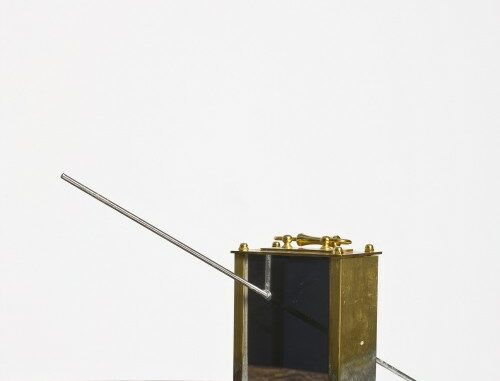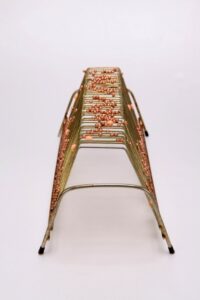
After moving to different countries, this summer Junghwa Lee is going to show her artworks at her first solo exhibition at the YOOM Gallery in Seoul.
You normally work and live in London and Seoul, but at the end of last December you finished a residency in Vermont, US. What is it like to work in an international context? What influences, inspirations and differences have you found in the three continents?
Due to my worldly life style, my work is about the relationships between the surrounding objects and myself. I can easily compare each countries culture or style from daily objects. Even if each object has the same function, they have a different way of using colour, material, or size in each country. From those differences, I became interested in producing objects or spaces which are the combination of these different customs – like me.
To me, colour is the most distinguish feature in terms of understanding each country. One of the ways to find differences in each city is visiting a cheap shop, like a pound shop (London), a dollar shop (Vermont) or a 1000 won shop (Seoul). Compared to others, London uses stronger colour – primitive and fluorescent. Dollar shops have a tendency to use more artificial, or plastic colour, pastel tone, or monotone. Seoul ones are similar to dollar shops, but the size of the items are smaller. Combining the colours and figures have inspired my artwork greatly.
Your installations involve objects and spaces that let people experience the ‘extraordinary from ordinary life perception’. Can you explain the process of building your artworks?
My work process is quite intuitive. I collect objects or any kind of material from the street, local markets, or a pound shop. I also take some photos wherever I go. It is kind of my daily practice. Collecting objects is space drawing to me. Like drawing a line on paper, I draw (collect and display) space with objects. I can’t figure out what makes me decide to choose objects. It just happens with due to instinct. But they are usually second hand or cheap ones from my surrounding area. With my collection, I start to deconstruct them to nullify social function or identities until they become material or simple figures. For example, a clock becomes a box. Then, I construct materials in unconventional ways.
In one of your statements, you talk about the creation of a tension – a laud of silence that comes from the assemblage of ordinary objects. What role does the public have in your practice?
Personally, I believe that the most unfamiliar moment comes from familiar or undefined scenes. It is similar to the public. But, acquaintance is very subjective. From my art objects, people can find familiarity in their own way and face with odd part depends on their backgrounds. Or they may not find any familiar thing. Interesting thing is that majority people try to figure out my objects what it is and where does it come from. Because it can be something, but there is no clear clue to read my object. As I told you before, I deconstruct the object to nullify the function or identity. Through various public feedback, I intertwine social and cultural context during my practice and alter my perception to develop my practice.
In 2010 you participated in a collective exhibition named ‘Tiptoe into infinity’. That London exhibition, according to the curators, was in fact a question: ‘Can I tiptoe into infinity with no direction, In no dimension, And still in victory?’ Do you think that the frailty and solidity of your artworks’ aim to this ‘tiptoeing into infinity’?
I didn’t make my artworks with the aim of the exhibition. But infinity contains something cannot that define and frame; it is out of a boundary. The artworks in the exhibition were about oddness and curiosity because it was unusual scenes. Coexistence between frailty and solidity in my works creates odd tension. In the end, it drags people beyond rationality, towards somewhere like infinity.
Which artists (contemporary or from the past) left the biggest mark on your practice?
I regularly change it, but at the moment, I am into Balthus painting.
Are you currently planning new exhibitions or projects? Where can we see your works in the coming months?
The next one will be in Korea in June. It will be my first solo show in Korea. I am looking forward to working on it. I will do one installation and show several objects and drawings.
Junghwa Lee’s website: www.junghwa-lee.com


Leave a Reply